As a common consumer, I usually go to market or groceries every week, if not every day. In the market or groceries where meat and vegetable are sold, a weighing scale (either a digital or analog) is used before a price is set for a certain product you buy.
The basis of their pricing is the weighing scale. They cannot set the purchased price without this (unless they just sell by the sack or by cans) so it is always visible in the area. Nowadays, more advanced scales are programmed where prices are already computed basing it on its weight.
In these days where technology is always used as a tool to improve our lives, sometimes it is also used or being used to give unsatisfactory results.
In this post, I will show you how to calibrate or simply verify the accuracy of a weighing scale without using a standard weight.
I will present in this post a simple guide to be used for checking a scale whenever we purchase something where weighing is related, to provide some tips on how to avoid being cheated in the market area just by using what we already have and always carry with us, a bottled water.
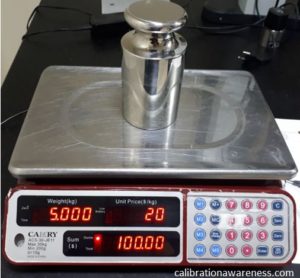
We are Not Aware
Most of us when using the weighing scale does not think if the weighing scale used is accurate or not, simply because we are not aware regarding the accuracy of the scale or maybe we trust the weighing scale (and the seller) or maybe the expected amount is already acceptable to us.
We do not even ask if the weighing scale they use is calibrated or not. But how do we know it is calibrated?
A calibrated weighing scale should have a calibration sticker and a calibration seal placed visibly on its body. See below photo. This will indicate the calibration date and calibration due date of the weighing scale.
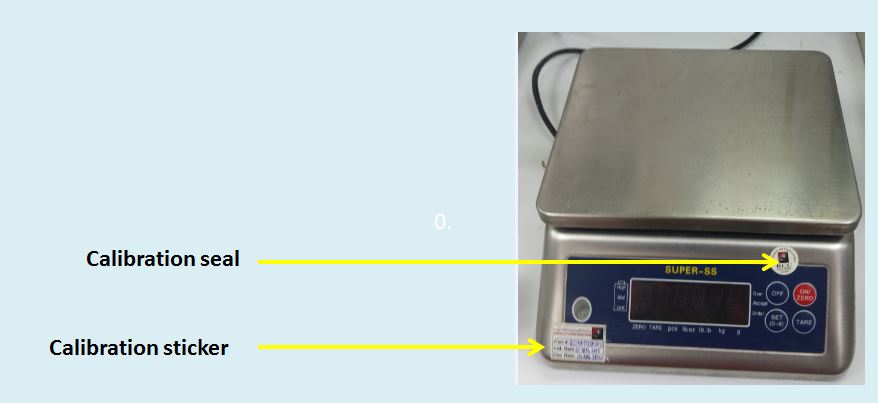
please visit this link to know more about a calibrated instruments).
But what do you feel if you buy a kilo of meat regularly then suddenly when you check it at home or to other more accurate and trusted weighing scale it is only 900 grams (0.9 kilos)? 100 grams is already deducted from you but you had paid the exact amount for a 1 kilo of meat (you have been cheated!).
Of course, it will make you mad and next time, you will not go back to that seller. It could be his fault or the weighing scales fault, but the true reason we do not know.
We Need to be Aware!
I will share with you in this topic on how we can avoid this kind of problem in case you encounter or if it happens that you buy some meat in the market and you are not sure whether the scale is displaying an acceptable reading.
Acceptable because there is no 100% accurate reading, there is always an inaccuracy or we call it uncertainty. But if this uncertainty is very small, then it is not a big problem for us. We need to be aware of this kind of situation in order for us to be protected and not to be cheated.
The Reference Standard for Balance Verification
First, I just want to show the standard way of checking the accuracy of a weighing scale (without the technicals). In order to check the accuracy or if the reading of the scale is acceptable, we need a standard weight (or mass), this standard weight with known mass is certified by a calibration laboratory.

The reading is compared between the weighing scale display and the standard weight value, this is called Calibration and a calibration technician is the one handling this. If it is a 1kilogram Standard Weight, when you put it on a weighing scale, it should also display a 1kilogram. In this way, if they have the same reading, we can say that the weighing scale is accurate.
But usually, in calibration, a set of masses/ weights are used to verify the full range of the weighing scale. But for the reason of verification, one standard weight is fine.
Visit this link to see how a digital weighing scale is calibrated in a laboratory.
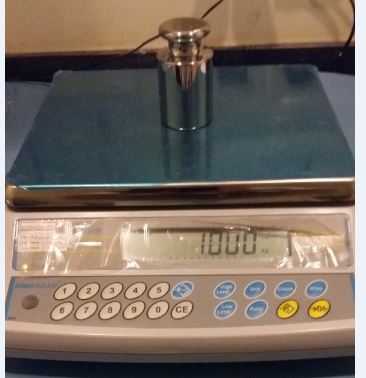
In connection with this, since we do not carry a standard weight (which is not practical, this is expensive and heavy) if we are going to the market, one thing that I observe that can be used in replacement for the standard mass is bottled water. Yes, a bottled water!
A Common Household Tool for Scale Calibration
In the advancement of technology, bottled water is already affordable to everybody. Today, most people are always carrying bottled water with them wherever they go. It is considered as a common household tool not just for drinking but also for other usage that you can imagine with.
If you are also looking around your house for an exact weight to calibrate your scale, then this is a good option for you.
Since bottled water is manufactured in a finite or with an exact container and a volume, it has also an exact weight that can contain the exact amount of water (with very small error).
If you do not know the weight of the bottle, a good technique is to remove the water from the bottle then “tare” the bottle and return again the water so that you will measure only the water content.
“Tare” function on a scale means it will zero out or disregard the weight of the bottle to measure only the content. See the photo below.
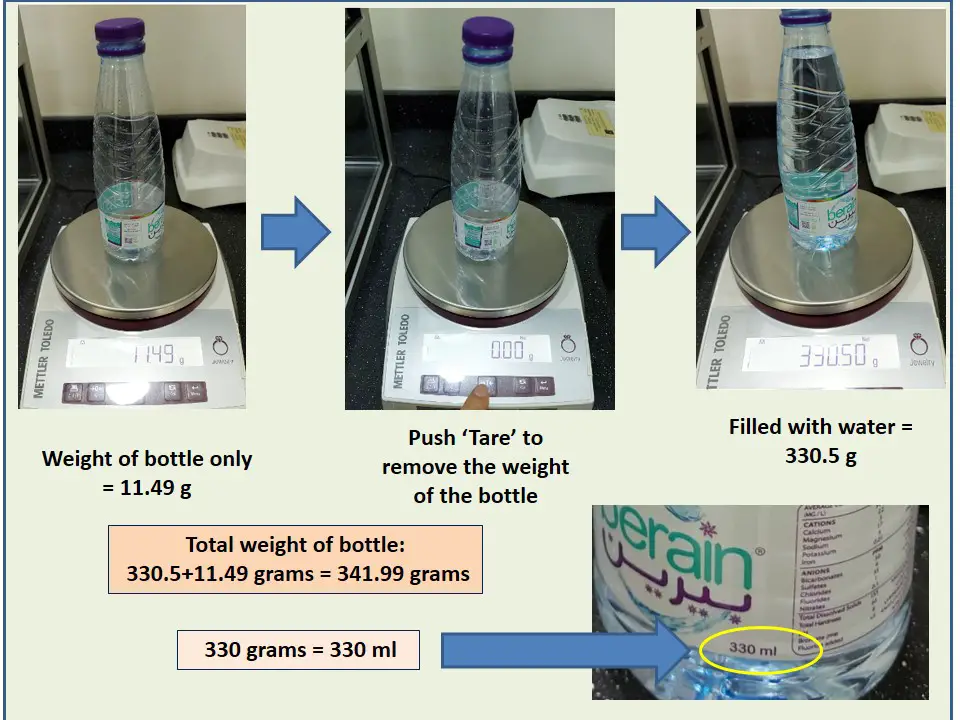
So it is also wise to use this as a check standard during weighing in replacement for a standard weight. We do not need a super-accurate standard like the standard weights; we just want to know if the expected reading being displayed is correct and acceptable.
Bottled Water as a Reference Standard
If you are looking for something in your house to calibrate your scale that weighs within the range of 250 grams to 1000 grams, you can use a bottled water.
Since bottled water has a fixed volume that is based on its container, the bottle, the water content can be used as our basis to check the accuracy of a balance or a scale. Mostly, if we are going to the market or groceries. We do not need a super-accurate value so a little error is not important for the sake of our verification while at home or at the grocery store.
What is equivalent to a 500 grams weight you might ask?
Liters is directly proportional to a kilogram, therefore liter = kilogram. See below simple conversion:
0.330 liter = 330 ml = 0.330 kilogram = 330 grams
0.5 liter = 500 ml = 0.5 Kilogram = 500 grams
0.6 liter = 600 ml = 0.6 Kilogram = 600 grams
1 liter = 1000 ml = 1 kilogram = 1000 grams
The photo below is 600 ml bottled water with the actual weight of water and bottle. The weight of the bottle alone is 27 grams, having a total of 627 grams. If you will use this bottle to other scale, it should also read 627 grams.
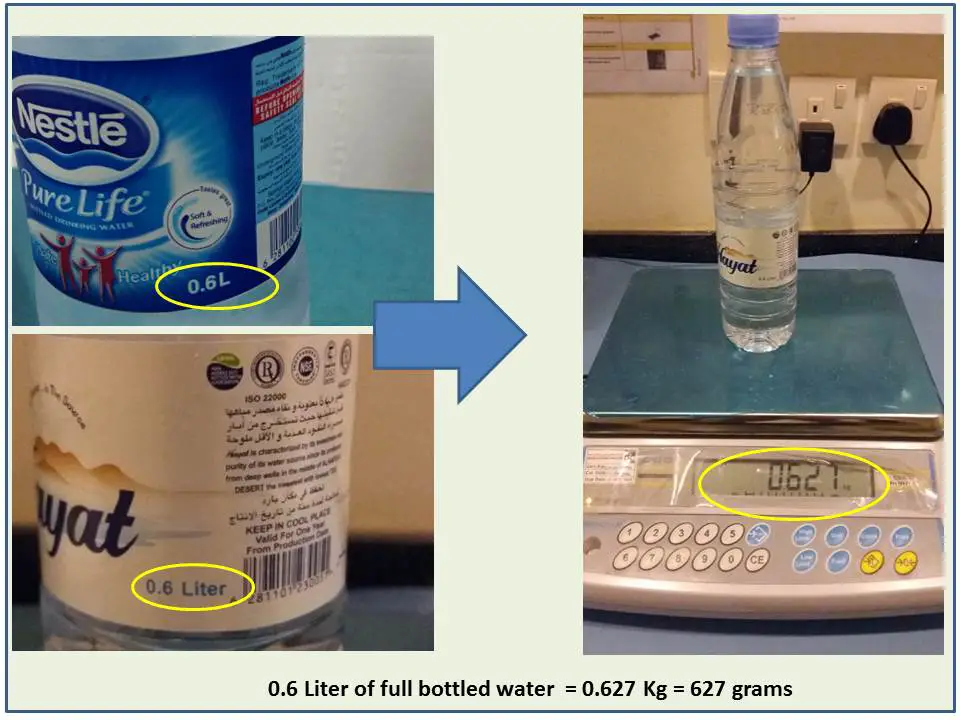
If you put a 0.6 liter of bottled water filled in full on a weighing scale, the expected reading should be 627 grams or 0.627 kg.

.
0.6Liters = 600 ml or 600 grams
Gross Weight = 627 grams >> weight of bottle and water
Approximate weight of the bottle only = 20 grams
Tare weight = (627 – 20) =607 grams >> expected weight of the water only
.
.
That is how simple it is. But considering also the weight of the bottle which is approximately 16 to 20 grams on a 500 to 600 ml bottle. So we expect if we weigh a full 600 ml bottle, it should be within 616 to 630 grams (the bottling company has also an inaccuracy in their refilling process).
.
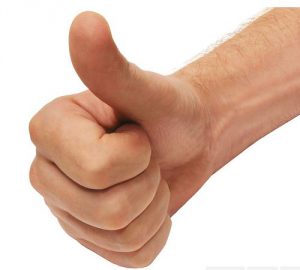 Since we know this already, every time we go to the market and not sure about a certain weighing scale, “just put your bottled water first before they put the meat or what is needed to be weighed.” This way, you are making a verification to make sure that the reading is accurate as expected, in this way, you get what you have paid for and create a win-win situation.
Since we know this already, every time we go to the market and not sure about a certain weighing scale, “just put your bottled water first before they put the meat or what is needed to be weighed.” This way, you are making a verification to make sure that the reading is accurate as expected, in this way, you get what you have paid for and create a win-win situation.
.
“As a final tip, if you really want a more accurate bottled water where your purpose is to use as a reference standard to check other scales for home use, then I recommend preparing a set of bottled water with different ranges by using another calibrated and more accurate scale.”
.
.
By the way, in order for us consumers to be protected from this kind of problem, the government has a body or organization monitoring all measuring instruments or devices that are used for the public which includes gasoline and water meters.
These are under what we call Legal Metrology. In the Philippines, legal metrology is under the institution called Industrial Technology Development Institute (ITDI) which is then connected to the Department of Trade and Industry (DTI). If a weighing scale is not calibrated and it is being used in public, you can file a complaint to them.
To learn more about what accuracy and precision with regards to calibration, please visit this page https://calibrationawareness.com/
Thank you for visiting my site.
Are there any other things that are practical to use? Leave a comment and subscribe.
Best Regards,
Edwin

2 Responses
Amy Saunders
Oh, wow! I didn’t even know that even small-sized water bottles can be used to recalibrate the reading of our weighing scale as long as we know how to manage their measurements. My neighborhood baker is going to be really busy this thanksgiving season because it means he’ll get lots of orders for his pastries. He’d certainly need the ingredients to be precise eventually. Hence, I believe it’s time for him to find a supplier so he can acquire the right equipment for his food preparation very soon.
edsponce
It is not really a recalibration but more on verification.
Thanks for reading.
Best regards,
Edwin